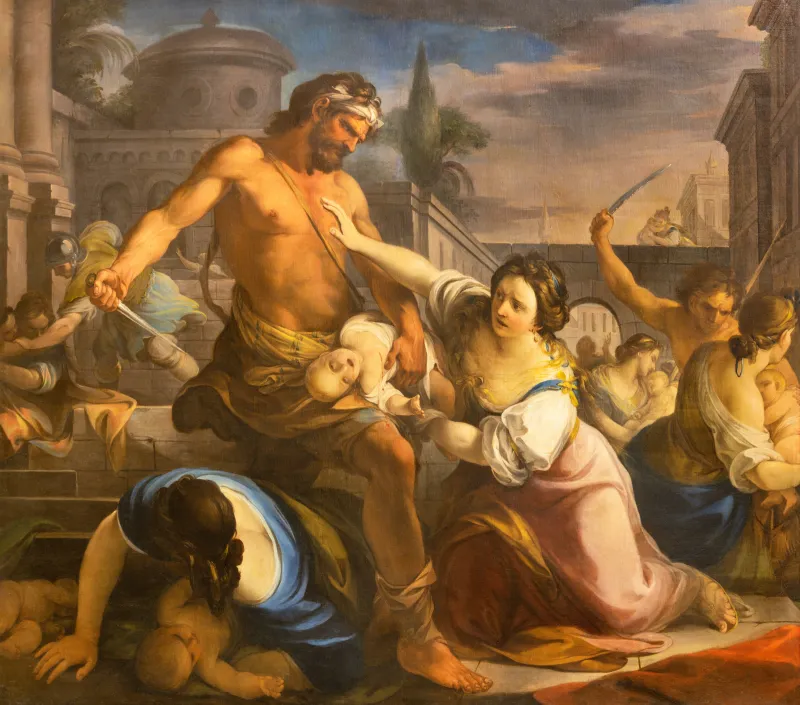
Washington, D.C. Newsroom, Dec 19, 2022 / 01:00 am (CNA).
A pro-life novena invites the faithful to ask for the intercession of the Holy Innocents — the baby boys who are, today, recognized as the first martyrs and as pro-life patron saints.
While they did not know Jesus, they died in his place.
The novena — a prayer repeated for nine consecutive days — can be said at any time of the year. But Catholics are encouraged to begin the prayer on Dec. 19 in order to finish it by the feast day of these little saints, Dec. 28.
Novena to the Holy Innocents
Heavenly Father,
“By their wordless profession of faith in your Son, the Holy Innocents were crowned with life at His birth.” Knowing how precious they are to you and how similar they are to the millions of innocent lives lost through abortion, we call on them to join in our prayer:
1. That all our elected leaders, legislators, and judges may come to acknowledge the humanity of every child in the womb and enact laws and policies to defend them, we pray: Lord, hear our prayer.
2. That everyone throughout the world may be given the light to see beyond all doubt the uniqueness and full humanity of every child who has ever been conceived, we pray: Lord, hear our prayer.
For these intentions and in union with the Holy Innocents, we pray as the Lord Jesus taught us: “Our Father, who art in heaven …”
Feast of the Holy Innocents, post-Communion prayer
Michele M. Taylor, the associate director for communications for the Florida Catholic Conference (FCC), told CNA that this particular novena was a joint effort of the state pro-life coordinating committee of the FCC in 2009.
A version of the Holy Innocents novena is sometimes misattributed to Bishop Jaime Soto of Sacramento. In a comment to CNA, he spoke about its relevance today.
“Life, liberty, and the pursuit of happiness should not be denied to those deemed disposable by a throwaway society,” he said. “I urge all of us to be the persistently joyful messengers of the gospel of life and the hopeful companions both children and their mothers need.”
The story of the Holy Innocents appears in the Gospel of Matthew.
After Jesus’ birth, King Herod the Great of Judea — named “king of the Jews” by the Roman Senate — learned of this “newborn king of the Jews” from the Magi. Troubled by the news, he deceivingly asked the Magi to report back to him Jesus’ location “that I too may go and do him homage.” But a dream warned the Magi not to return to Herod.
St. Matthew (2:16–18) records what happens next.
“When Herod realized that he had been deceived by the Magi, he became furious. He ordered the massacre of all the boys in Bethlehem and its vicinity who were two years old and under, in accordance with the time he had ascertained from the Magi,” the Gospel reads. “Then was fulfilled what had been through Jeremiah the prophet: ‘A voice was heard in Ramah, sobbing and loud lamentation; Rachel weeping for her children, and she would not be consoled, since they were no more.’”
If you value the news and views Catholic World Report provides, please consider donating to support our efforts. Your contribution will help us continue to make CWR available to all readers worldwide for free, without a subscription. Thank you for your generosity!
Click here for more information on donating to CWR. Click here to sign up for our newsletter.





Leave a Reply